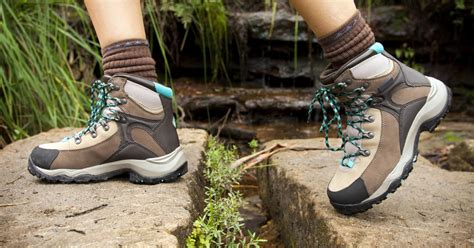Lightweight Boot for Hiking

When it comes to hiking, one of the most critical pieces of gear is a good pair of boots. They can make or break your hiking experience, providing the necessary support, protection, and comfort for your feet during those long, arduous trails. Among the various types of hiking boots available, lightweight boots have gained significant popularity due to their ability to provide excellent performance without the bulk. In this article, we’ll delve into the world of lightweight hiking boots, exploring their benefits, key features to look for, and how to choose the perfect pair for your hiking adventures.
Introduction to Lightweight Hiking Boots
Lightweight hiking boots are designed to offer the same level of protection and support as traditional hiking boots but with a significantly reduced weight. This reduction in weight is achieved through the use of advanced materials and innovative designs. For instance, manufacturers often use lightweight yet durable upper materials such as mesh panels and synthetic leather. Additionally, the midsoles and outsoles are engineered to be thinner and more flexible, contributing to the overall lightweight nature of the boots.
Benefits of Lightweight Hiking Boots
- Enhanced Mobility: One of the most significant advantages of lightweight hiking boots is the freedom of movement they offer. With less weight on your feet, you can move more naturally and cover more ground with less fatigue.
- Increased Comfort: Lightweight boots often feature more breathable materials, which can keep your feet cooler and drier. This can significantly enhance comfort during long hikes, especially in warmer conditions.
- Better Traction: While it might seem counterintuitive, many lightweight boots are designed with outsoles that provide excellent grip on various surfaces, from smooth rocks to muddy trails.
Key Features to Look For
When selecting a pair of lightweight hiking boots, there are several key features to consider:
- Water Resistance: Look for boots with a waterproof membrane, such as Gore-Tex or eVent, to keep your feet dry in wet conditions.
- Breathability: Mesh panels and other breathable materials can help regulate foot temperature and prevent blisters.
- Ankle Support: Although lightweight, these boots should still offer sufficient ankle support to prevent twists and sprains.
- Traction: The outsole should provide good grip on different surfaces. Look for deep lugs and a comfortable, agile design.
Comparative Analysis: Traditional vs. Lightweight Boots
| Feature | Traditional Boots | Lightweight Boots |
|---|---|---|
| Weight | Heavier | Lighter |
| Materials | Thicker, more durable | Advanced, lighter |
| Breathability | Less breathable | More breathable |
| Support | Higher ankle collar | Lower profile |
| Traction | Excellent | Excellent |

Historical Evolution of Hiking Boots
The evolution of hiking boots, including the development of lightweight models, is a story of continuous innovation driven by advances in materials science and design. From the early, heavy, and often cumbersome boots to the sleek, lightweight, and highly functional boots of today, the journey has been marked by significant milestones. The introduction of waterproof membranes, for instance, revolutionized hiking footwear by providing a balance between waterproofing and breathability.
Expert Insights
According to hiking experts, the choice between traditional and lightweight boots ultimately comes down to personal preference, the type of hiking you’ll be doing, and the conditions you expect to face. “Lightweight boots are perfect for day hikes or backpacking trips where every ounce counts. However, for more rugged, long-distance hikes, especially in cold or wet conditions, traditional boots might offer better protection and support,” advises a seasoned hiker.
Future Trends in Lightweight Hiking Boots
As technology continues to advance, we can expect to see even more innovative designs in the realm of lightweight hiking boots. Some potential future trends include:
- Sustainable Materials: There’s a growing demand for eco-friendly materials that reduce the environmental impact of manufacturing hiking boots.
- Customizable Fit: With advancements in 3D printing and shoe design software, customizable boots that fit each individual’s foot perfectly could become more mainstream.
- Smart Technology Integration: Some boots may incorporate smart technology, such as step tracking, GPS, or even real-time weather updates, to enhance the hiking experience.
Practical Guide to Choosing the Right Pair
- Assess Your Needs: Consider the terrain, weather conditions, and duration of your hikes.
- Try Before You Buy: If possible, try on several pairs to find the one that fits best.
- Read Reviews: Look for feedback from other hikers to get a sense of how the boots perform in real conditions.
- Check the Weight: While all lightweight boots are designed to be, well, light, some are lighter than others. Find a balance between weight and the features you need.
Decision Framework for Lightweight Hiking Boots
When deciding on a pair of lightweight hiking boots, consider the following criteria:
- Purpose: What will you be using the boots for? (Day hikes, backpacking, etc.)
- Terrain: What kind of terrain will you be hiking on? (Trails, mountains, wetlands)
- Weather: What are the expected weather conditions? (Dry, wet, cold)
- Personal Preference: Do you prioritize comfort, support, or durability?
Conclusion
Lightweight hiking boots represent a significant advancement in hiking gear, offering hikers the chance to enjoy their trails with less burden and more comfort. Whether you’re a seasoned adventurer or just starting out, there’s a pair of lightweight hiking boots designed to meet your needs. By understanding the benefits, key features, and future trends in lightweight hiking boots, you can make an informed decision and find the perfect companion for your hiking journeys.
FAQ Section
What are the primary benefits of using lightweight hiking boots?
+The primary benefits include enhanced mobility, increased comfort through better breathability, and often, surprisingly good traction despite their lightweight nature.
How do I choose the right pair of lightweight hiking boots for my needs?
+Consider your hiking style, the terrain you’ll be on, the expected weather conditions, and your personal preferences regarding comfort, support, and durability. Trying them on and reading reviews can also provide valuable insights.
Are lightweight hiking boots suitable for all types of hiking?
+While extremely versatile, lightweight hiking boots might not be the best choice for very rugged, long-distance hikes, especially in harsh weather conditions. In such cases, traditional boots might offer better protection and support.
What future trends can we expect in lightweight hiking boots?
+Future trends include the use of sustainable materials, customizable fits through advanced technologies like 3D printing, and the integration of smart technology to enhance the hiking experience.
How important is waterproofing in lightweight hiking boots?
+Waterproofing is crucial, especially if you plan to hike in wet conditions. Look for boots with a reputable waterproof membrane to keep your feet dry and comfortable.
Can I use lightweight hiking boots for activities other than hiking?
+Yes, lightweight hiking boots can be versatile and used for other outdoor activities such as backpacking, camping, or even as sturdy walking shoes in rugged terrain.


